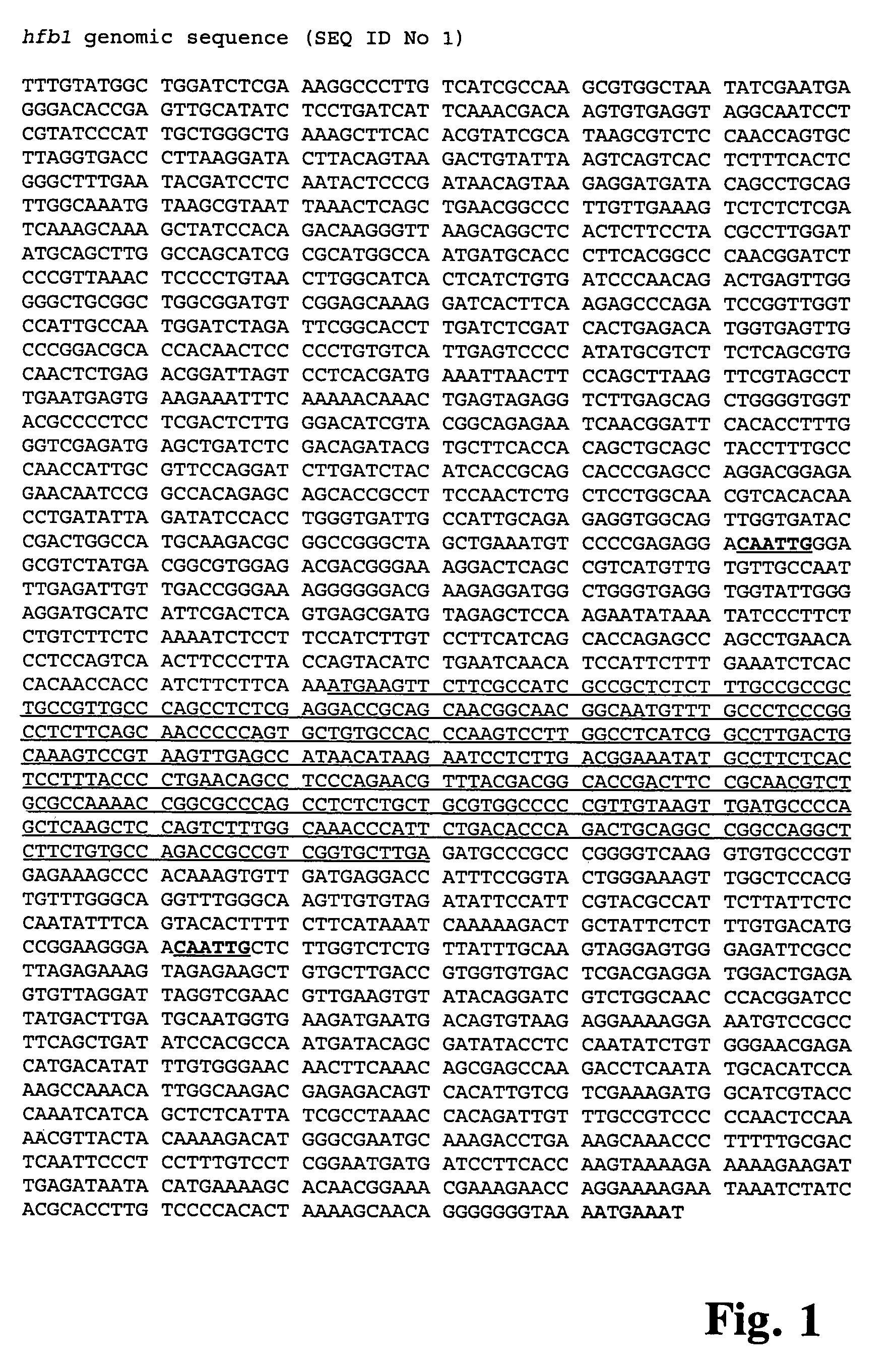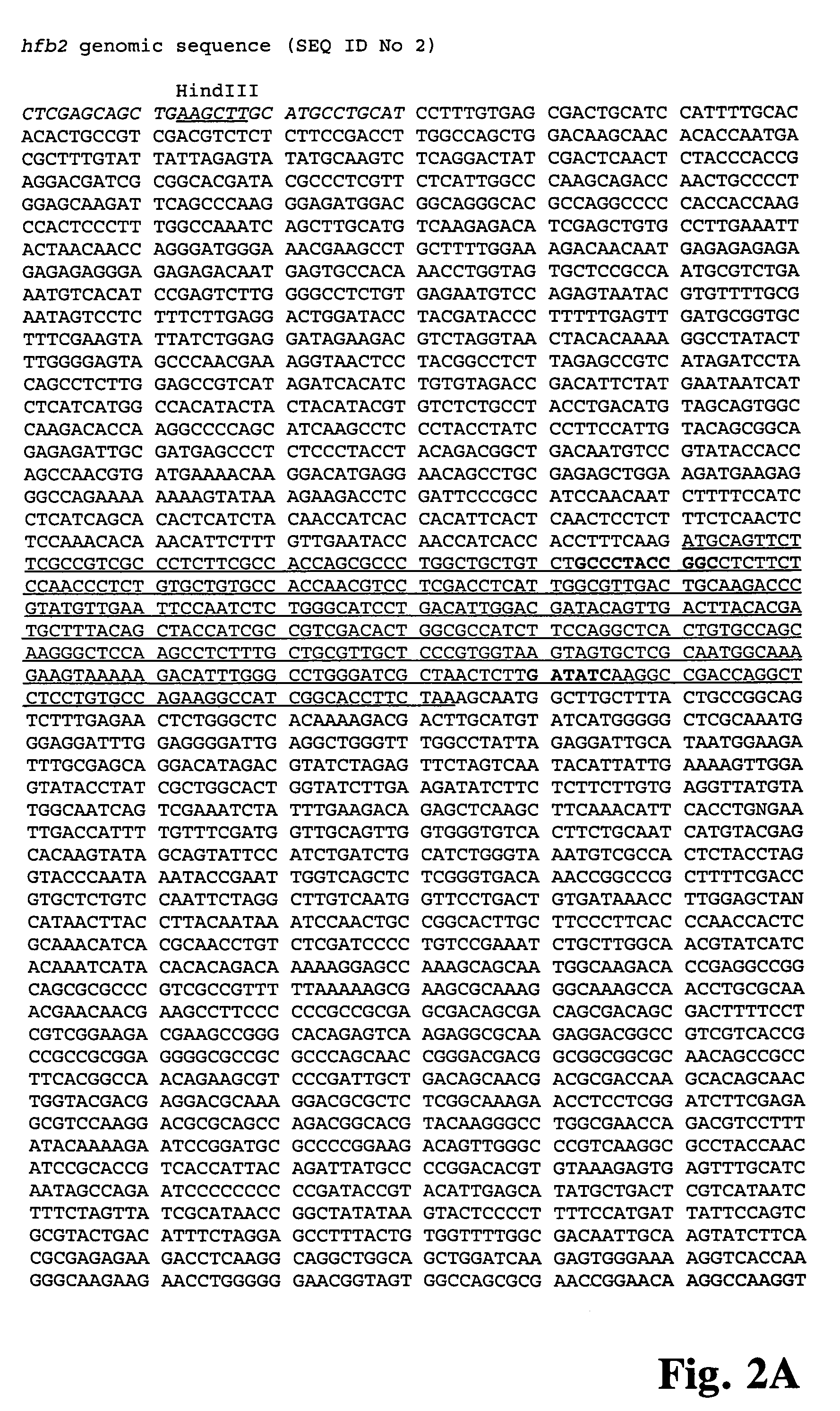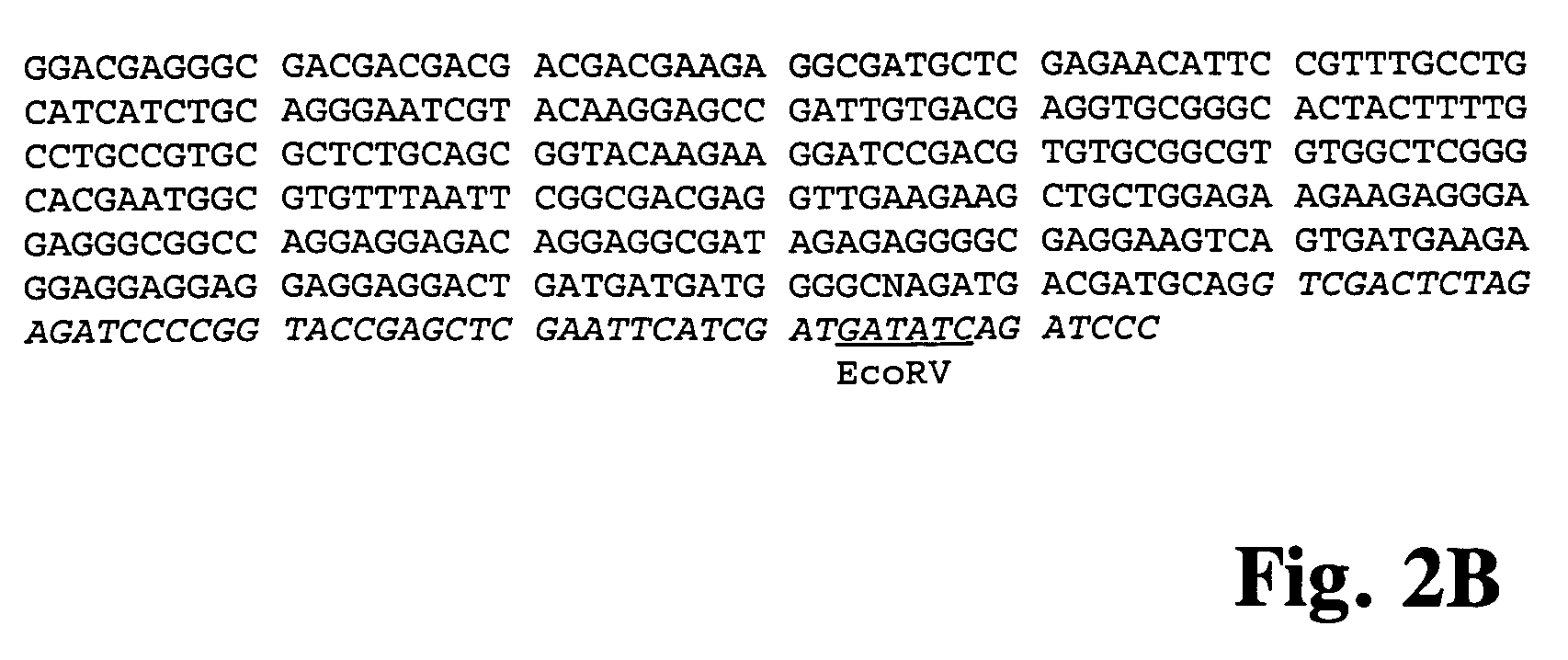Method for decreasing the foam formation during cultivation of a microorganism
a microorganism and cultivation method technology, applied in the direction of bio peptides, chemistry apparatus and processes, etc., can solve the problems of contaminating the system, forcing foam out of the vessel, preventing gas mass transfer,
- Summary
- Abstract
- Description
- Claims
- Application Information
AI Technical Summary
Benefits of technology
Problems solved by technology
Method used
Image
Examples
example 1
Construction of Vectors for Deletion of hfb1 and / or hfb2 Genes from the Trichoderma reesei Genome
[0095]For deletion of hfb1 (SEQ ID 1, FIG. 1) gene from T. reesei genome, a plasmid was constructed in which the hfb1 coding region was replaced by the amdS gene of Aspergillus nidulans coding for acetamidase. Plasmid pEA10 (Nakari-Setälä et al. Eur. J. Biochem. (1996) 235:248-255) carrying ca. 5.8 kb SalI fragment containing the hfb1 coding and flanking regions was digested with MunI and blunted with T4 DNA polymerase. The subsequent vector fragment missing the ca. 950 bp MunI fragment containing the coding and some flanking regions for hfb1 was purified from agarose gel and ligated to a 3.2 kb amdS fragment released from p3SR2 (Hynes et al. Mol. Cell Biol. (1983) 3:1430-1439; Tilburn et al. Gene (1983) 26:205-221) with SphI and XbaI and blunted with T4 DNA polymerase. The resulting plasmid is pTNS24 (FIG. 3). It carries a deletion casette containing the amdS gene with ca. 2.7 kb and 2 ...
example 2
Transformation of Trichoderma and Purification of Δhfb Clones
[0097]Trichoderma reesei strains QM9414 (VTT-D-74075), Rut-C30 (VTT-D-86271) and QM9414 Δhfb1 (VTT-D-99724) were transformed essentially as described (Penttilä et al., Gene (1987) 61:155-164) using 3-13 μg of the plasmids pTNS24 and pTNS27 or the deletion casettes released from them with the proper restriction enzymes.
[0098]The Amd+ and Hyg+ transformants obtained were streaked three times onto plates containing acetamide and hygromycin, respectively (Penttilä et al. (1987) Gene 61:155-164). Thereafter spore suspensions were made from transformants grown on Potato Dextrose agar (Difco).
[0099]To confirm the removal of the hfb genes from the genomes, Southern analyses were carried out. Mixed Amd+ and Hyg+ transformants were cultivated on minimal medium (Penttilä et al. (1987) Gene 61:155-164) containing 3% glucose and 0.2% peptone for isolation of genomic DNA using Easy-DNA kit (Invitrogen). Approximately 2 μg of DNA were cl...
example 3
Enzyme Production of Trichoderma QM9414 of Δhfb1, Δhfb2 and Δhfb1Δhfb2 Strains on Glucose, Sorbitol and Lactose
[0102]Strains VTT-D-99724 (Δhfb1), VTT-D-99726 (Δhfb2), VTT-D-99725 (Δhfb1Δhfb2) and their host strain VTT-D-74075 (QM9414) were cultivated in shake flasks at 28° C. for three and seven days in 50 ml of Trichoderma minimal medium (Penttilä et al. 1987) supplemented with 0.2% peptone and as a 2% carbon source either i) glucose, ii) sorbitol or iii) lactose. Starting pH was pH 4.8. Culture medium samples were taken after 3 of cultivation. Secreted total proteins were analysed by the method of Lowry et al. 1951. Endoglucanase and endoxylanase activities were measured according to IUPAC standard method and Bailey et al. (1992) using hydroxyethyl celluose (HEC, Fluka 54290) and birch xylan (XYL, Roth 7500) as substrates, receptively. Protease activity was determined semi-quantitatively by dotting 5 μl of culture filtrates on 1.5% agar plates (pH 5) containing 1% skim milk and es...
PUM
| Property | Measurement | Unit |
|---|---|---|
| concentration | aaaaa | aaaaa |
| pH | aaaaa | aaaaa |
| pH | aaaaa | aaaaa |
Abstract
Description
Claims
Application Information
 Login to View More
Login to View More - R&D
- Intellectual Property
- Life Sciences
- Materials
- Tech Scout
- Unparalleled Data Quality
- Higher Quality Content
- 60% Fewer Hallucinations
Browse by: Latest US Patents, China's latest patents, Technical Efficacy Thesaurus, Application Domain, Technology Topic, Popular Technical Reports.
© 2025 PatSnap. All rights reserved.Legal|Privacy policy|Modern Slavery Act Transparency Statement|Sitemap|About US| Contact US: help@patsnap.com



